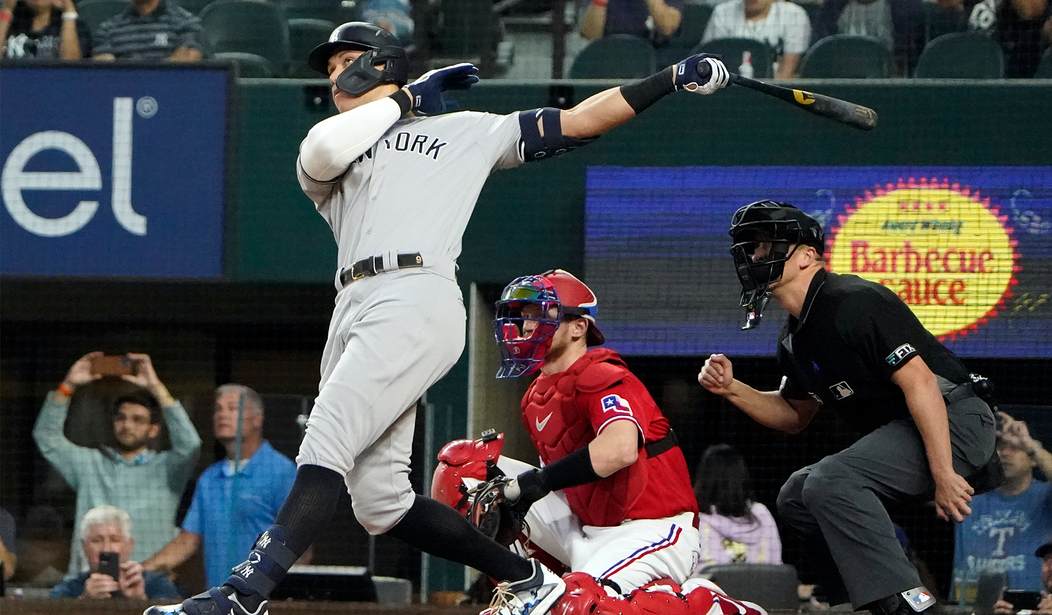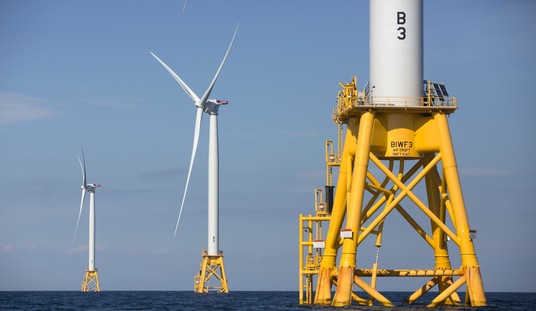In this episode of The Existential Threat to Mankind…
Welp, while the climate loons continue to warn us that climate armageddon is at the planet’s doorstep, turns out global warming is a good thing for Major League Baseball and its fans who love the long-ball game. According to a new scientific (ahem) study, global warming is making MLB sluggers even hotter hitters.
I’m going to destroy this nonsensical claim, shortly, but let’s first lay it out. You know, “scientifically.”
As reported by the Associated Press, hotter, thinner air allows balls to fly further — I don’t dispute that — which has contributed to a noticeable increase in home runs since 2010. Nonsense, as it relates to pretend global warming.
As further reported by AP, a statistical analysis by Dartmouth College scientists was published in Friday’s Bulletin of the American Meteorological Society. The analysis of 100,000 major league games and more than 200,000 balls put into play came to the astonishing [sarc] conclusion that players hit at least 500 more homers between 2010 and 2019 (roughly 50 a year) because of, yeah, “global warming.”
Major League Baseball is seeing more home runs and the reason behind this surge is more than just having better players —climate change is playing a part as well according to a new study. https://t.co/wYNkz4jJvM pic.twitter.com/rAoS12ea7G
— The Associated Press (@AP) April 7, 2023
It’s basic physics, tossed in AP. Here’s more:
“Global warming is juicing home runs in Major League Baseball,” said study co-author Justin Mankin, a Dartmouth climate scientist.
When air heats up, molecules move faster and away from each other, making the air less dense. Baseballs launched off a bat go farther through thinner air because there’s less resistance to slow the ball. Just a little bit farther can mean the difference between a homer and a flyout, said Alan Nathan, a University of Illinois physicist who wasn’t part of the Dartmouth study.
Both Nathan and the Dartmouth team found a 1% increase in home run likelihood with every degree the air warms (1.8% with each degree Celsius). Total yearly average of warming-aided homers is only 1% of all home runs hit, the Dartmouth researchers calculated.
OK, look. Anyone who’s played competitive baseball, which I have, knows — or should know — that flyballs travel farther in warm weather; that’s not the issue. But whether or not that warmer weather is caused by global warming, or, um, weather patterns, is the point of contention.
Even more, let’s pretend, for argument’s sake that pretend-global warming isn’t pretend, and does account for a smidge farther flyball travel. There are far more legitimate explanations for a modest increase in the number of home runs per season, with the largest factor being the size of the baseball, the stitches, how the balls are constructed — and how the game itself is played.
As reported by Sports Illustrated in February 2021, the composition of the ball has been a hot topic since 2015, when players, fans, and the media first started asking questions as the rate of home runs climbed.
Those questions continued through the ’17 season, which saw a record-breaking 6,105 homers, prompting MLB to commission a group of academics and scientists to home run rates. In the report they issued a year later, they determined that the ’17 baseball was more aerodynamic.
[…] In 2019 … flatter seams caused pitchers to change their grips—and balls to soar even farther. Drives that once would have been long outs instead left the field, leading to 6,776 home runs, another record.
The SI article goes on and on, but the bottom line is that the construction of the MLB’s ball has frequently changed, which has a direct, proven relationship with how far baseballs fly.
In addition to the construction of the ball itself and its effect on how far a flyball travels, as MLB teams continue to draft bigger, more powerful hitters, common sense suggests that bigger, stronger guys are going to hit baseballs farther than smaller, less-strong guys.
Finally, baseball strategies have changed over the years. While many teams were built to play a small-ball game, with smaller, faster players, more base-stealing, hit-and-run plays, and reliance on singles and doubles, other teams play a long-ball game, with more emphasis on home runs and extra-base hits.
But to point to “global warming” as a significant reason, if any, why MLB batters hit 500 more home runs over a 10-year period is ridiculous, in my “non-scientific” opinion.
Incidentally, did I mention that the average U.S. temperature in June, July, and August has increased by a mere two degrees over the last 40 years, according to the National Oceanic and Atmospheric Administration? Yeah, while some might call that “global warming,” others might call it part of a climate cycle.
Al Gore, Greta Thunberg, and John Kerry were unavailable for comment.














Join the conversation as a VIP Member